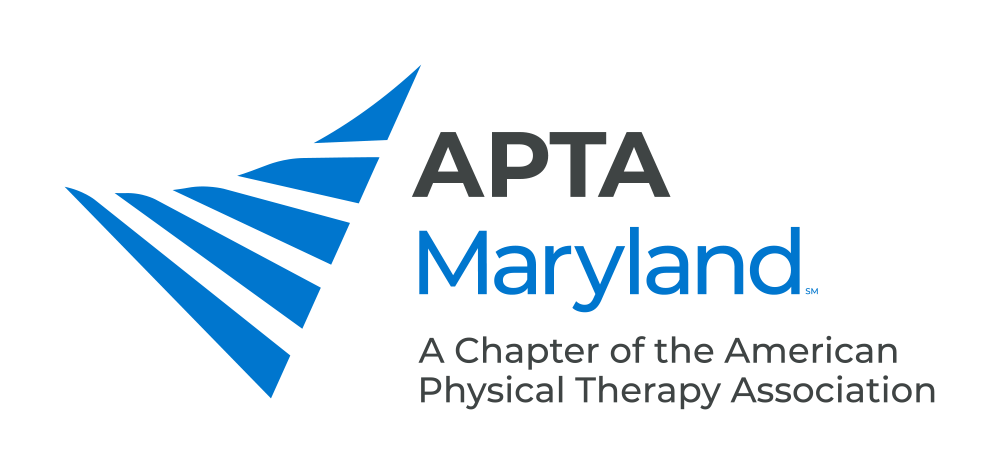Telehealth
The Maryland Board of Physical Therapy Examiners Permits the use of Telehealth.
Their 2019 position statement acknowledges the “intra-State” use of telehealth by Maryland licensees practicing physical therapy within the State of Maryland and to clarify that:
- Physical therapy practitioners must hold a valid Maryland license prior to providing physical therapy services via telehealth to clients physically located in Maryland; and,
- The practice of physical therapy, via telehealth or otherwise, in the State of Maryland must be in accordance with the Annotated Code of Maryland, Health Occupations Article, Title 10, and The Code of Maryland Regulations (COMAR), 10.38.01 – 10.38.11.
- PTAs and Telehealth: Supervising physical therapist” means a physical therapist who provides ongoing supervision to a physical therapist assistant regarding the care of a patient. Nothing prohibits supervision of/communication with the PTA being via telecommunication. Supervision of an aide CANNOT be remote. COMAR 10.38.01.01(B)(12) – Ongoing supervision” means that the physical therapist maintains continuing verbal and written contact with the physical therapist assistant to provide supervision and instruction adequate to ensure the safety and welfare of the patient. COMAR 10.38.03.01.B(21)
Telehealth for Persons Outside of Maryland
If an MD-licensed individual is looking to provide telehealth outside of the state, then you would need to seek a compact privilege in the state where you wish to practice telehealth. However, you should first verify what the telehealth law is in that state before proceeding.
To view all telehealth laws, click here.
2025 Legislation
This act expands telehealth to include certain audio-only telephone conversations under the definition of “telehealth” for the purpose of certain provisions of law relating to reimbursement and coverage of telehealth by the Maryland Medical Assistance Program and certain insurers, nonprofit health service plans, and health maintenance organizations; it also would preserve payment parity for telehealth.
Federal Telehealth Advocacy
APTA and association partners are aggressively lobbying to ensure that PTs remain authorized telehealth providers under Medicare. As many members are aware, the telehealth flexibilities that Congress afforded to Medicare were set to expire at the end of 2024. However, Congress provided an extension of those policies that is now set to expire on March 31, 2025. At present, Congress is crafting a Continuing Resolution (CR) to keep the government funded to avoid a partial government shutdown before the federal government’s spending authority will cease on March 15th. APTA and coalition partners are working to get a telehealth extension provision secured in the CR to keep PTs (and others) as authorized telehealth providers for as long as possible, while we also continue to push for a permanent policy.
There is broad bipartisan support for telehealth. Congress is considering providing an extension on telehealth ranging from another six months to two years. On February 24, 2025, APTA joined over 100 organizations in a letter to the U.S. Congress urging them to extend the current Medicare telehealth flexibilities in the upcoming spending package; Congress must extend the current telehealth flexibilities before they expire on March 31, 2025.
Concurrently members of Congress are introducing legislation to make Medicare coverage of telehealth permanent. On February 25th, H.R. 1614 was introduced in the U.S. House. by Reps. Mike Kelly (R-PA), Adrian Smith (R-NE), and Mike Thompson (D-CA), to make PTs, OTs, and SLPs permanent, rather than temporary, authorized providers of telehealth in Medicare. APTA endorsed this bill in the previous Congress and will support it again in the 119th Congress. Separately, Rep. Ro Khanna (D-CA) introduced the Telehealth Coverage Act (bill number not yet available) just last week. This bill would make permanent all the telehealth policies and flexibilities granted to Medicare during the pandemic which would include establishing PTs as permanent providers.
We will keep members updated on these fast-moving developments.
Additional Resources
APTAMD Webinar: Understanding Telehealth in Our Changing World
The benefits of providing telehealth services allows the therapist to meet the needs of increasing demands for patient-centered care with social distancing. This course will encourage therapists to expand their treatment protocols into the virtual world of medicine during these difficult times. Encouraging therapists to think outside the box and adapt their skill sets. The course is approved for two (0.2) credit hours by the Maryland Board of Physical Therapy Examiners.


